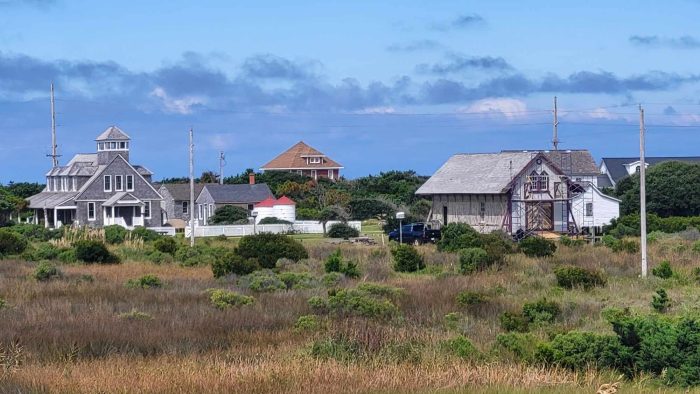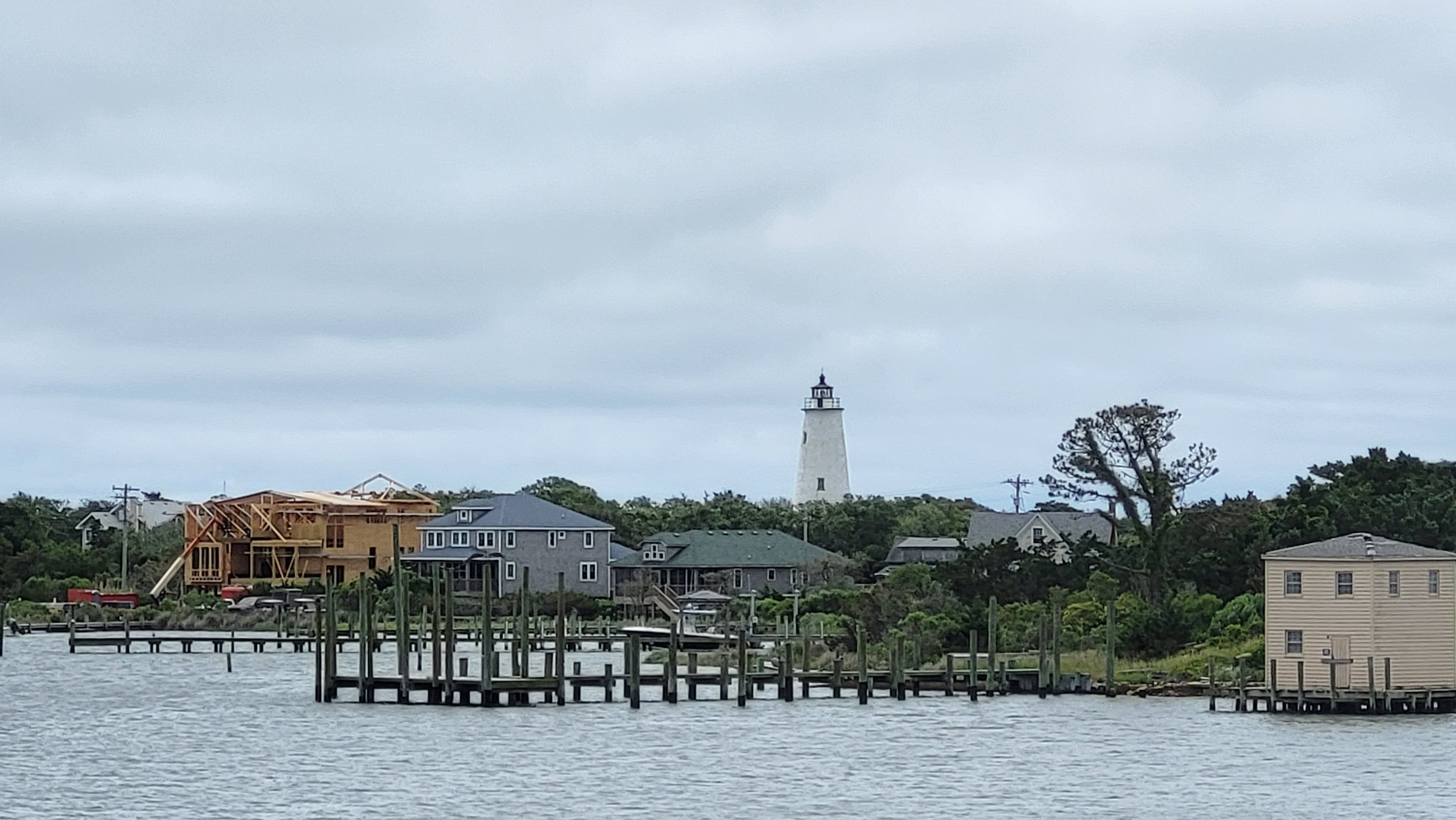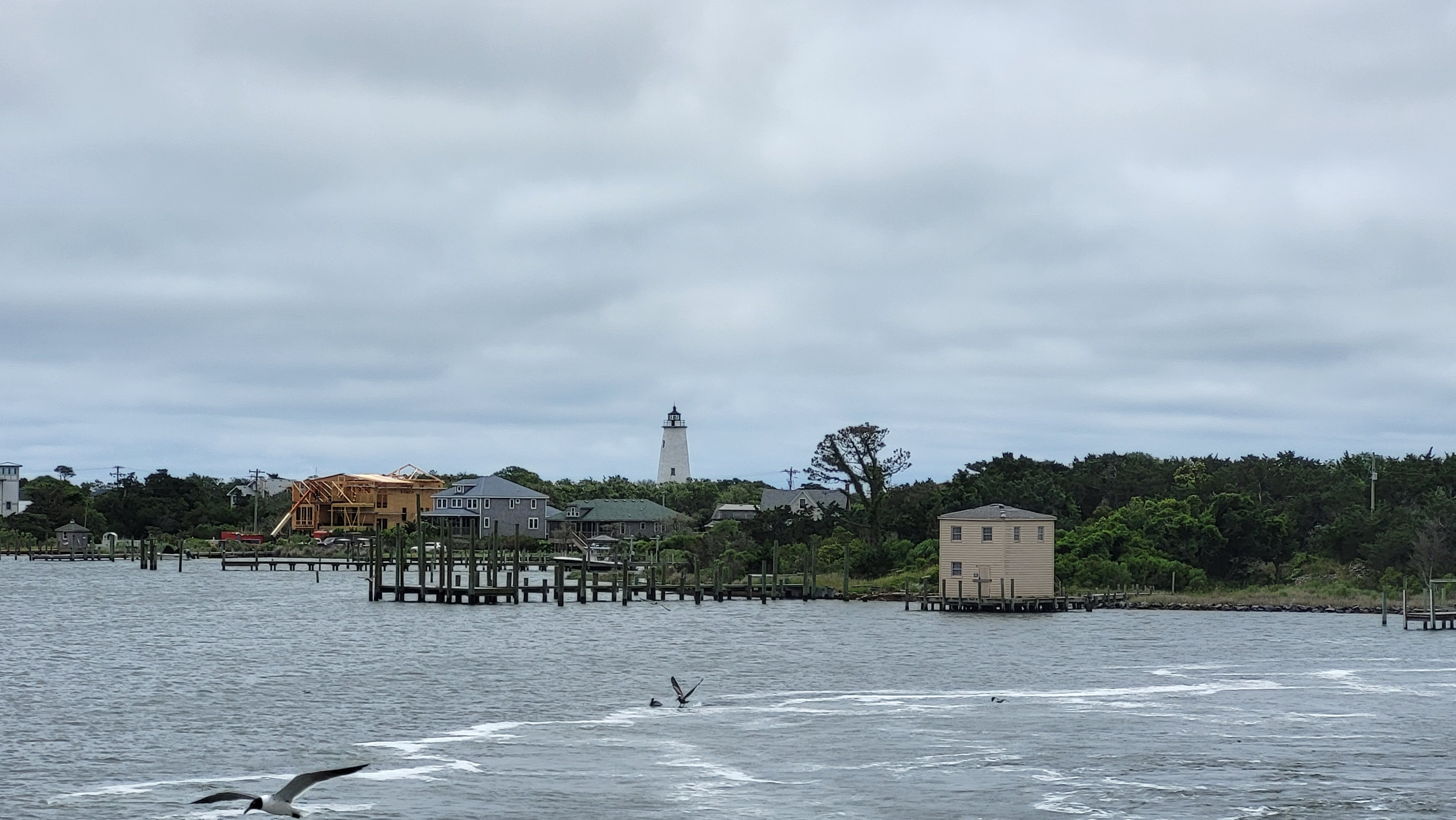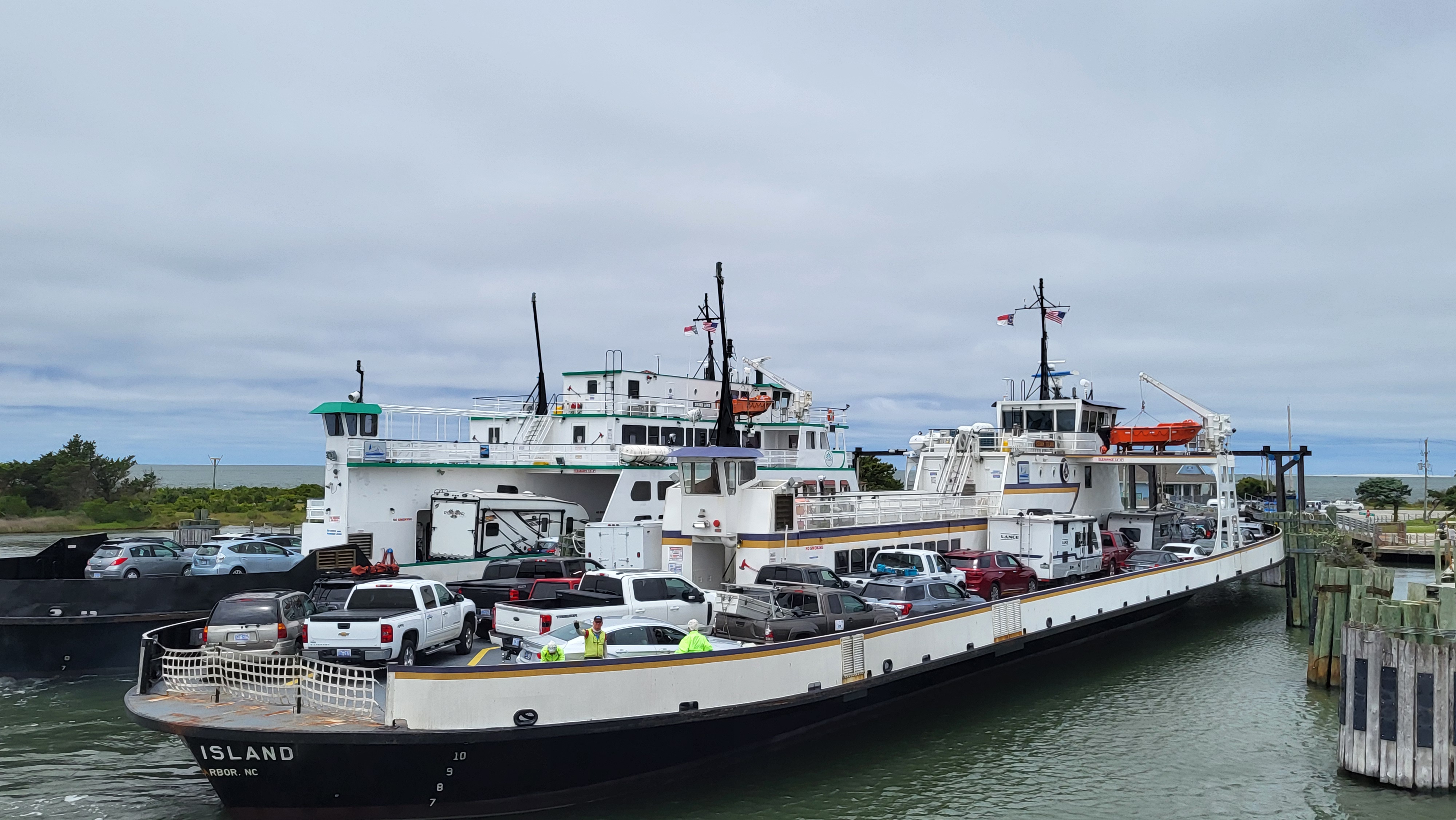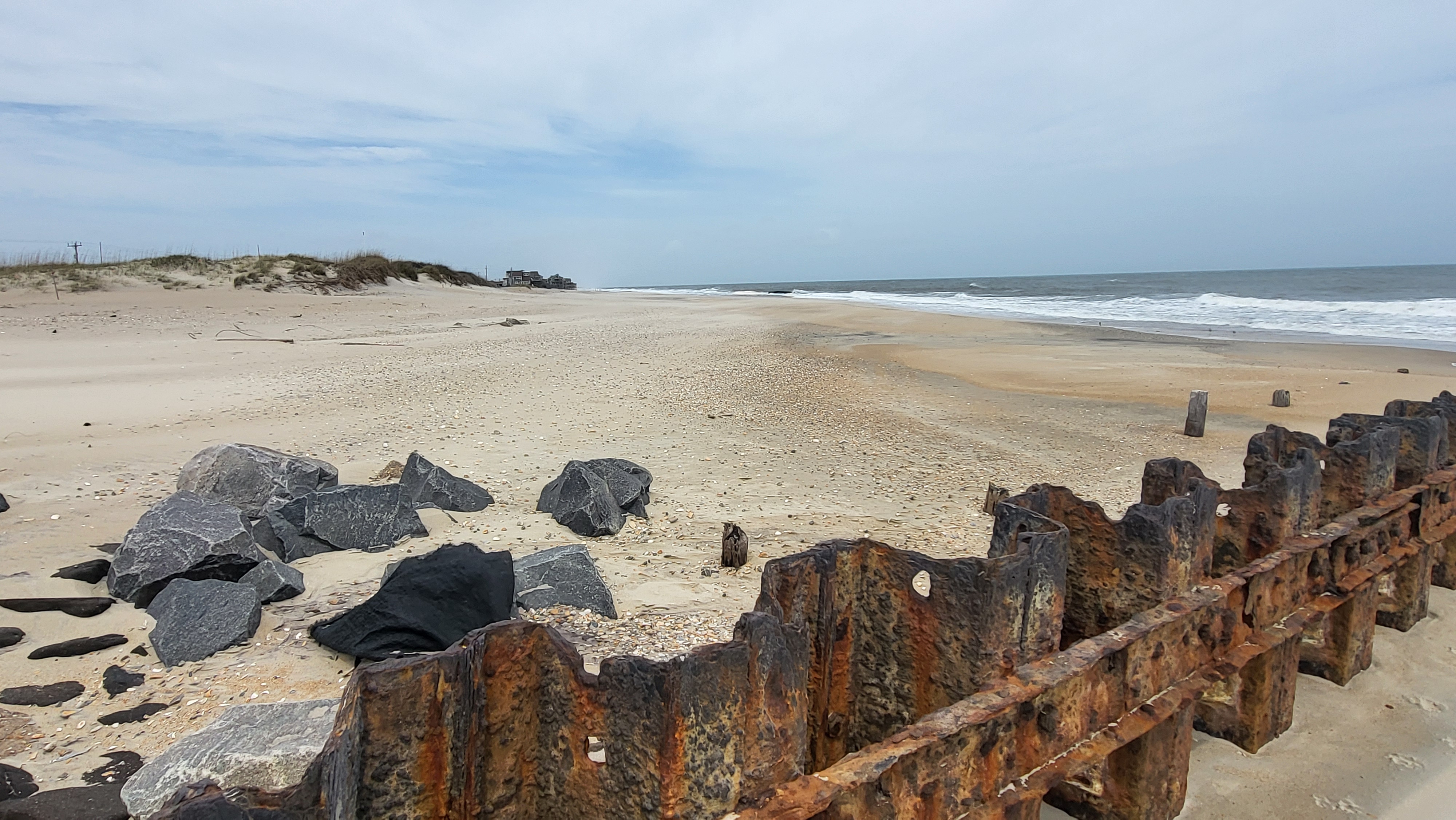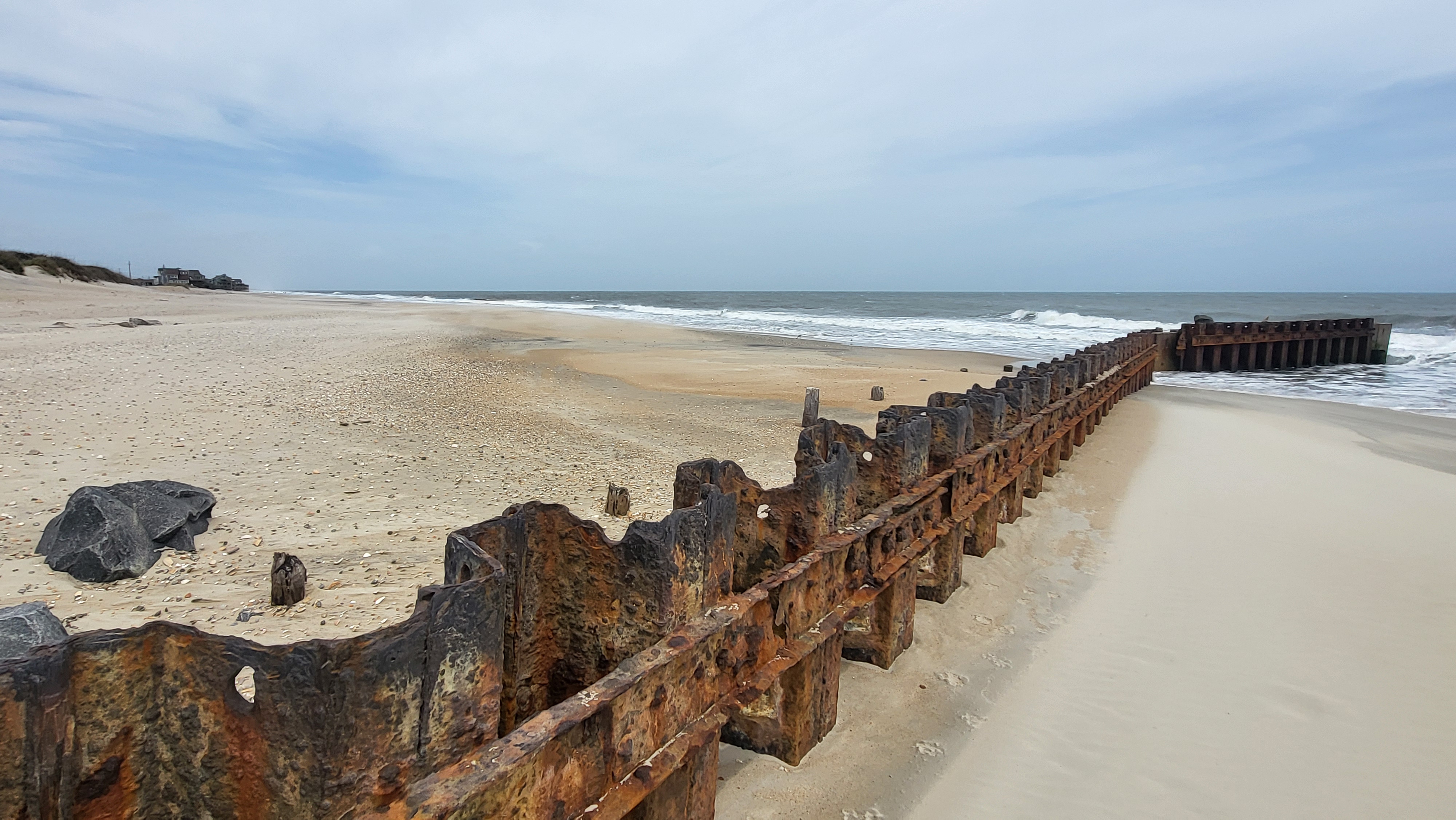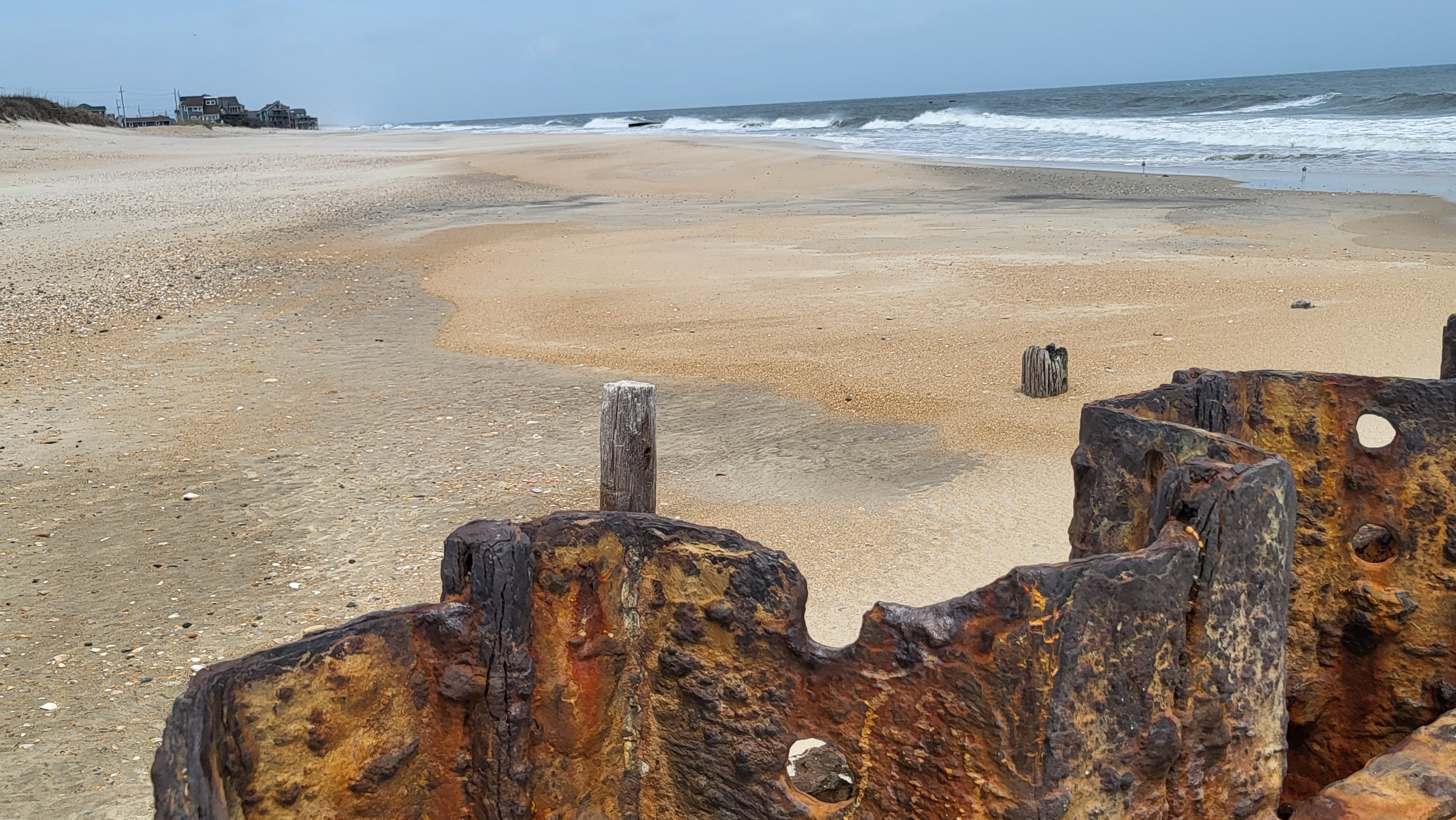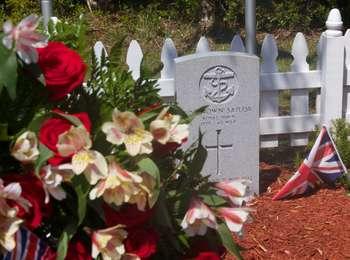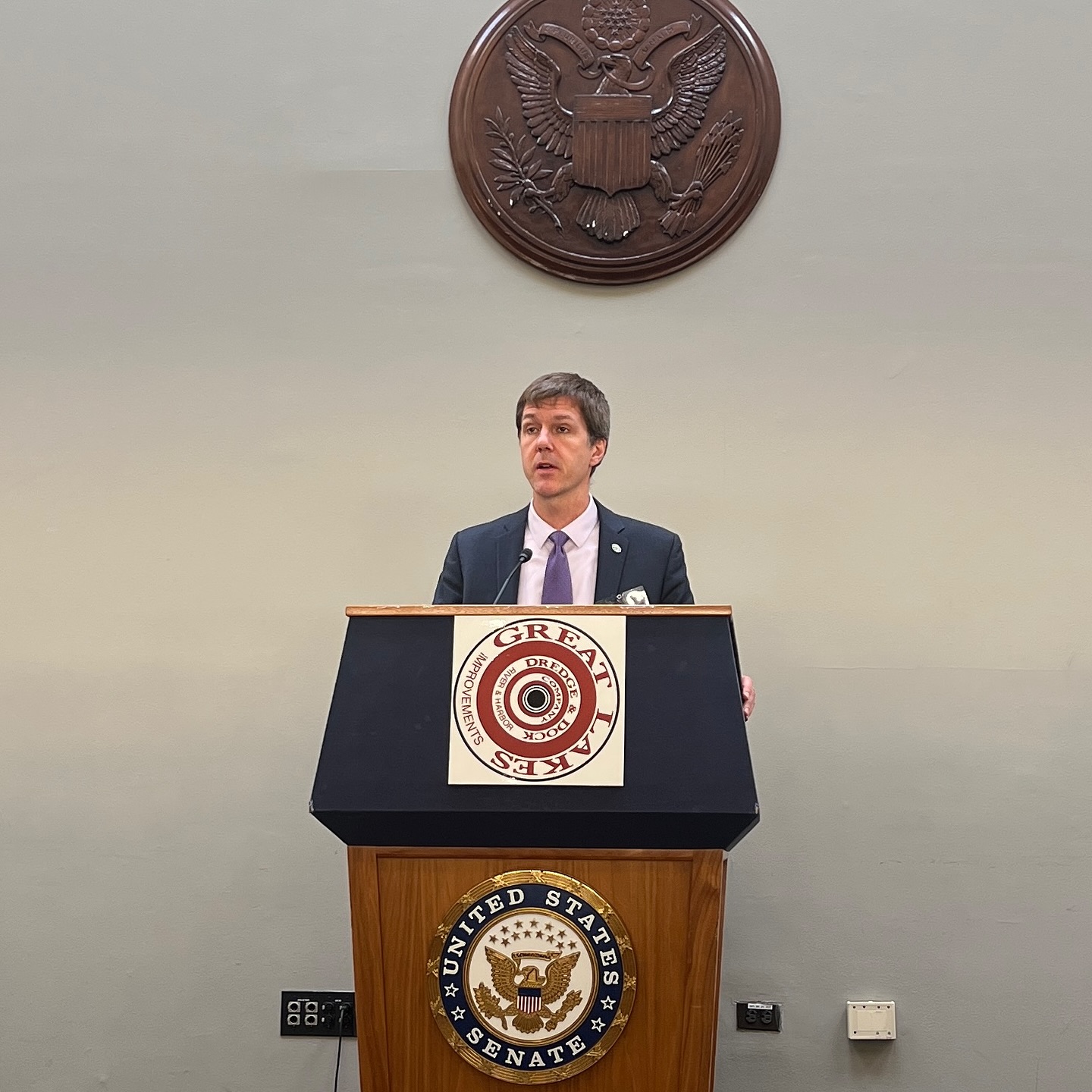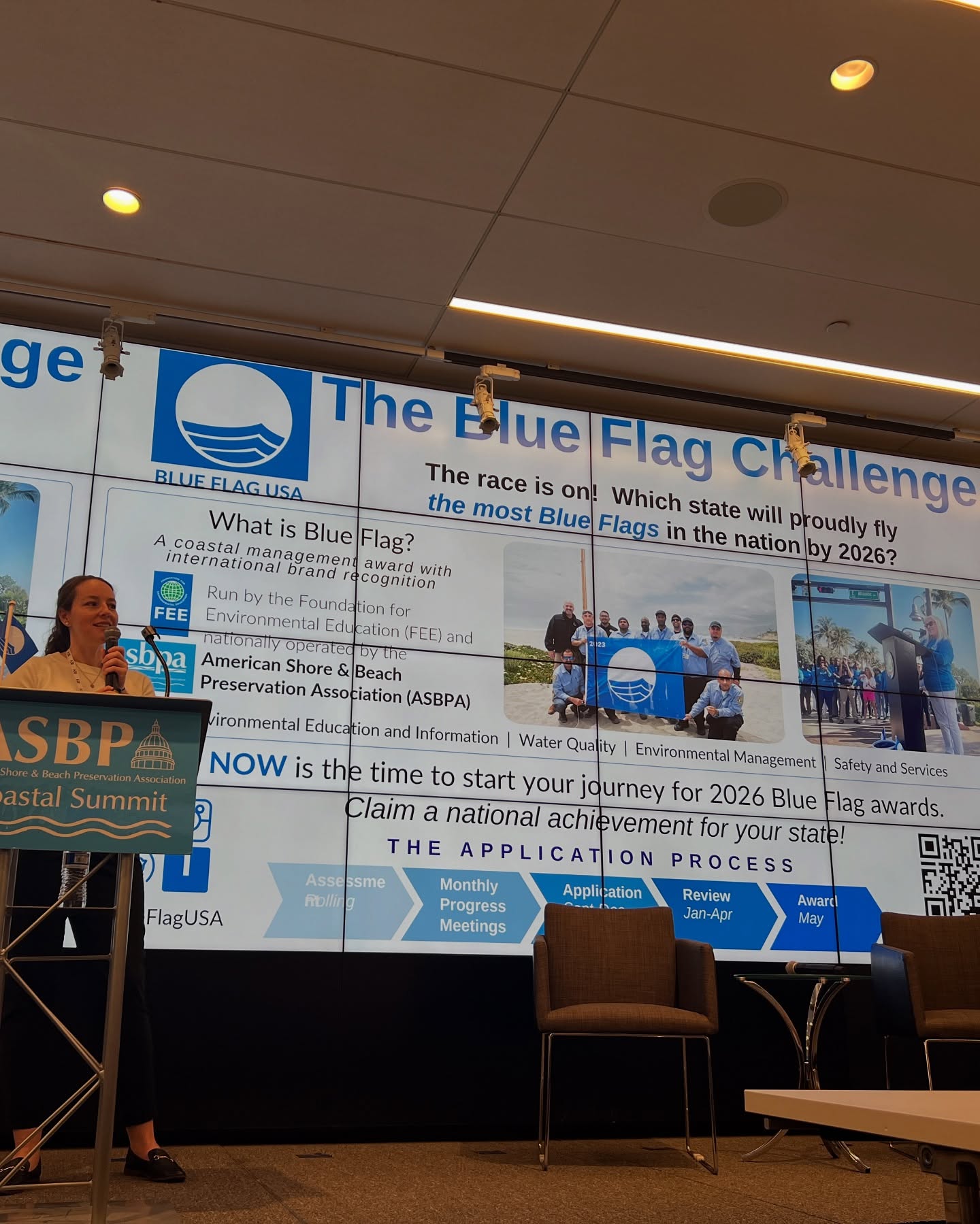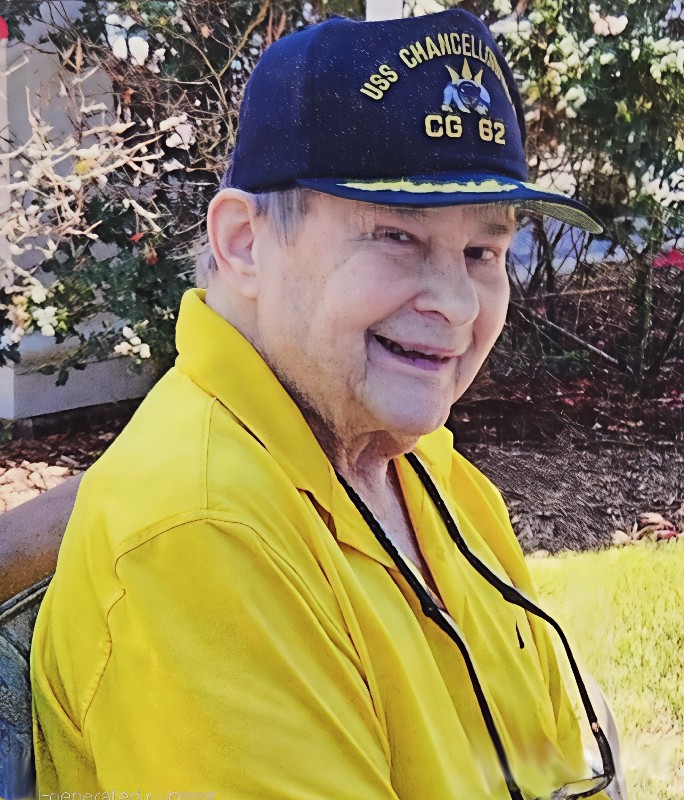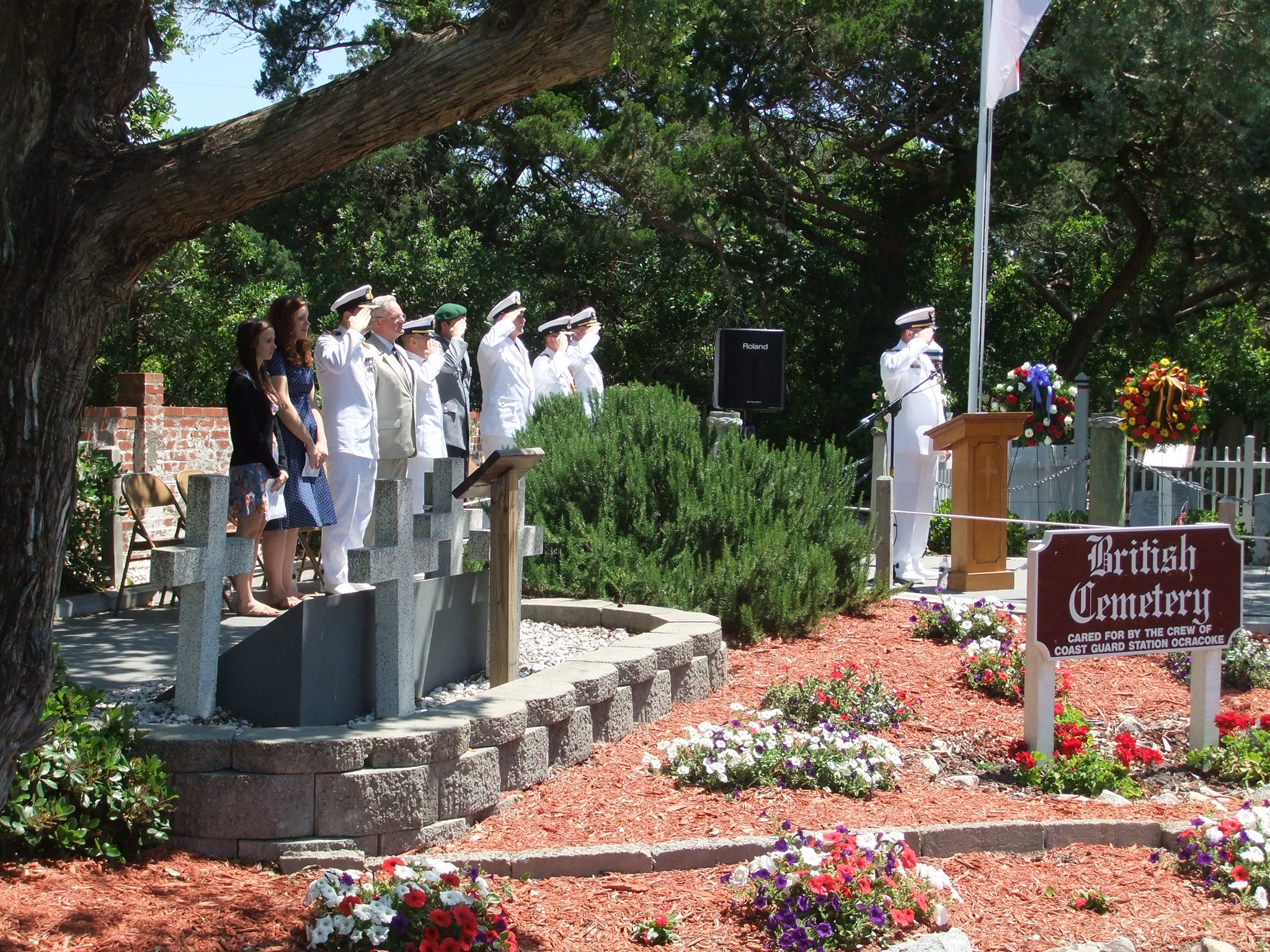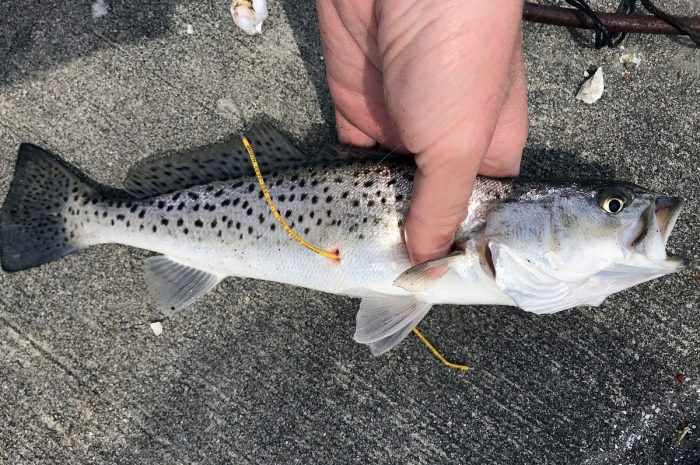A major restoration is underway at the 1874 Chicamacomico Life-Saving Station

The 150th anniversary of the U.S. Life-Saving Service in North Carolina has presented an opportunity for the Chicamacomico Life-Saving Station in Rodanthe to launch a big endeavor that has been in the works for years – a restoration of the original 1874 station.
The Chicamacomico Historic Site and Museum is home to a collection of historic structures. While the 1911 station serves as the primary museum and visitors center, the 1874 building located close to the ocean is a landmark in its own right. It was the first of seven life-saving stations that were built in 1874, and is one of the few remaining 1874 stations that is open to the public.
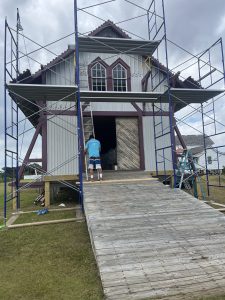
A restoration has been needed for decades, as the last major repair work was conducted in the 1990s, and was performed out of necessity, and not necessarily with an eye on keeping the station’s historical integrity intact.
During the current project, however, historical accuracy is at the forefront of every tiny piece of the restoration work, from the intricate wood carvings that hang from the awnings to the nails that hold the structure in place.
The restoration is spearheaded by contractor and historic preservationist Christian Thompson. While Thompson has tackled historic restoration projects for more than 30 years, the Chicamacomico Station has been a distinctive challenge, for many reasons.
Thompson officially started the project last year with an extensive amount of research and soon discovered that the historical guidelines that would dictate the work to come were muddled.
”It was an immense amount of research, and I looked at every avenue I could find,” said Thomspon, who rooted through the Outer Banks History Center, the National Archives, and other sources to track down helpful details. “I have plans and they are dated 1874, but they don’t exactly match this building or the other buildings that were built here.”
In 1874, seven Life-Saving Stations (LSS) were built along the North Carolina coastline. The Little Kinnakeet Station, (just north of Avon), was technically completed first, but the original station didn’t even last a year.
“The Little Kinnakeet Station was built, and the superintendent came down for his first inspection and said, ‘Your plans don’t match mine. Tear it down and rebuild it.” So, he had to take the whole building back down, rebuild it to the new standards, and put it back together,” said Thompson.
“If it wasn’t for that, Little Kinnakeet would have been the first station [in North Carolina],” added John Griffin, Chicamacomico Life-Saving Station Executive Director. “But we’re the first.”
Meanwhile, the Chicamacomico Station was supposed to be built with pre-fabricated and shipped-in supplies, but materials arrived warped and twisted, and couldn’t be used. “I think they used some of the materials from that lumber package that were in good condition, and then rebuilt all the other materials that weren’t acceptable,” said Thompson, noting that this created a deviation from the original blueprints.
Another challenge in determining the exact specifications is 150 years of storm damage and subsequent repairs.
The 1874 station has been moved four times, and two of those times were on purpose. Twice, the station was wracked by the ocean during a storm, and while the structure held firm, it had to be moved back to its home site.
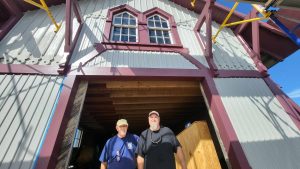
“There was an 1898 or 1899 hurricane where the structure was lifted from its foundation and was moved 30 yards away,” said Thompson. “Over the next month, the surfmen lifted the station, moved it back, and set it back on its original foundation.”
“If you think about that, it’s pretty amazing,” he added. “This structure was so well built that it became buoyant, like a boat, with all its contents inside, and it was able to lift up and float entirely intact. We don’t know if it got damaged, but it didn’t collapse and it didn’t fall down. The entire thing stayed intact, and floated away, and was carried back.”
Like many storm-damaged and oceanfront structures on Hatteras Island, the 1874 Chicamacomico Station had dozens of repairs over the decades, which included two major renovation projects – one in 1959 and one in the late 1990s and early 2000s.
Unfortunately, while all these repairs kept the station in one piece for a century and a half, they didn’t follow the historical restoration guidelines that Chris is following now.
New additions to the station are evident everywhere. Hundreds and hundreds of nails have been tacked into the sides of the building for no obvious reason, (and have to be removed), and pieces of new and hastily installed wood intermingle with original pieces of 1874 lumber. Parts of the station are missing with no clue as to where they landed – like the watchtower that was on top of the roof at one point – and paint is either missing or has been hastily added, with no thought about matching it to the original color scheme, inside or out.
It’s understandable that in order to ensure that the 1874 station survived the elements, past builders, contractors, and even surfmen stationed at Chicamacomico focused on repairs, and not maintaining historical accuracy.
However, this is not the case with this latest restoration project, and Thompson’s attention to detail goes miles beyond the basics.
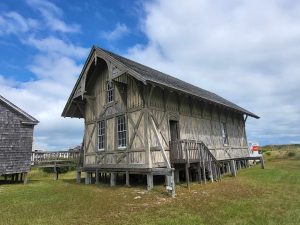
He found tiny bits of the original paint and sent them to a specialist in Maryland to have them analyzed so he could match the 1874 maroon and pale gray paint colors. He found salvaged wood that’s as old as the station itself to replace missing elements and pieced the parts together with specially reproduced and historically accurate nails.
As for the ornamental details, Thompson is painstakingly recreating these small pieces of art in his own shop.
The 1870s were the height of the Victorian architecture era, and even government buildings like the Like-Saving Service Stations were not immune from waves of decorative touches, as evident from the intricate gables and ornamental fixtures that are still found on the remaining 1874 North Carolina stations today.
The Chicamacomico Station’s facade had wooden cutouts of dolphins, mythical sea creatures, and even a trident worthy of King Neptune, which will be restored or re-added back to the exterior of the building as the project continues.
It’s a slow process to ensure that the station becomes a replica of the original 1874 structure, and this is further complicated by the fact that – like many structures on Hatteras Island – the more you dig, the more problems you find.
“We’ve just been doing a side at a time until we really get into the whole thing,” said Thompson. “Almost all of the upper boards on the oceanfront side of the building are original, so they’re 150 years old, but some of them had termite damage or storm damage. So we took them down and restored them and put them back up, because you try to save every amount of the [original structure] that you can.”
“They’re not pretty. They’re weather-beaten. But it tells the story,” he added. “If you put everything in brand new and slick and perfect, then you might as well build a new building. Anything that can be salvaged, and is restorable, should be restored and saved. And then anything that can’t be saved should be replicated exactly the way it was.”

After a year of work, Thompson has nearly wrapped up the first phase of the project – which includes the ocean-facing side of the building – and the goal is to have the first phase completed by the two-day anniversary celebration on October 12-13.
Behind the scenes, Griffin and his colleagues from the Chicamacomico Historical Association have been working hard to raise funds through grants, donations, and fundraisers like a raffle for hand-painted shakes which were featured at a 2024 Dare Arts Exhibit.
The first phase of the project has benefitted from a grant of $115,000 from the Dare County Tourism Board, a $15,000 grant from the Outer Banks Community Foundation, and individual donations that have ranged from $20 to $5,000.
But there’s still a lot more work to go – on the restoration and the fundraising front – in the months and years ahead.
“Any little thing that we can do [to raise funds], we’re doing, and it’s all going towards the restoration. This is our mission,” said Griffin.
There’s no timeframe on when the project in its entirety will be completed, but for now, Thompson continues to pay attention to every inch of detail so that, in the end, the 1874 Chicamacomico Life-Saving Station will be brought back to vivid life.
“The amount of detail in this building is just incredible. It’s such a teeny structure, but the intricacies of the details just blows your mind,” said Thompson. “Nobody does this anymore, and there’s just so much to it.”
